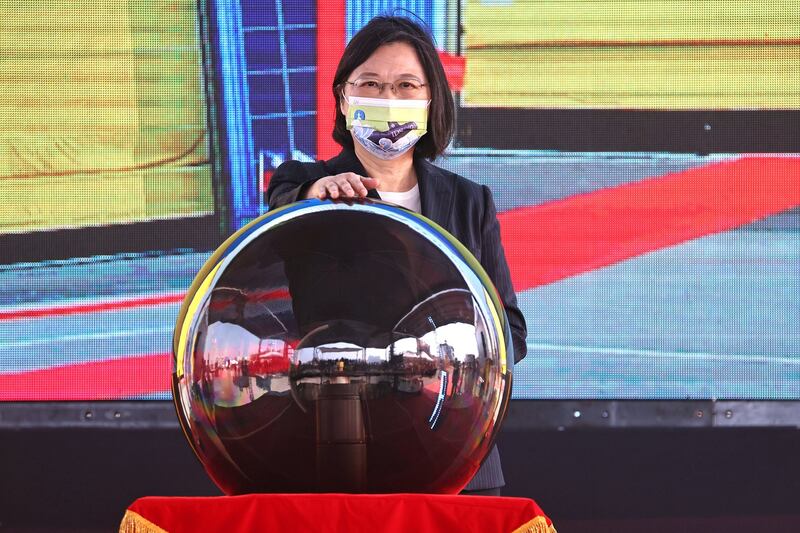The Taiwanese Navy has deployed one of its two most advanced submarines in naval drills in the Spratly Islands, a report by Taiwan’s Ministry of National Defense said without specifying the timing.
The Republic of China National Defense Report 2021 released on Tuesday said the Hai Lung (Sea Dragon) submarine from the 256th Fleet successfully took part in a number of missions including "the Navy and Air Force missile shooting drill, Lie Jin (Whale-hunting) drill, routine patrol and tactical combat drill in Nansha (Spratly) Islands, and combat-ready patrol and Hai Qiang anti-submarine drill."
It didn’t mention the time and frequency but as this is the defense report for 2021, observers say the drills are likely to have been conducted within the last 12 months.
Taiwan controls two of the largest islands in the South China Sea, the Dongsha (Pratas) Island and the Taiping (Itu Aba) Island. Taiping is the largest of the naturally occurring islands among the Spratlys which Taiwan call Nansha Islands. It is also claimed by China, Vietnam and the Philippines.
Governments from claimant countries have yet to respond to the news of the submarine drills but it has been widely covered by regional media.
Prior to this, Vietnam has repeatedly protested against Taiwan’s military activities at Taiping Island, which it calls Ba Binh, saying they “infringed upon Vietnam’s sovereignty and raised tensions in the South China Sea.”
“To be honest, I’m not at all surprised by this revelation,” said Collin Koh, a research fellow at the S. Rajaratnam School of International Studies in Singapore who studied the Taiwanese submarine program.
“It’s expected that the ROCN subs would conduct peacetime missions in the Spratlys anyway as Taiwan has sizeable possessions in the disputed area,” he said, using the initials for Taiwan’s navy.
“In times of a Taiwan Strait war, I believe Taiwanese defense planners will also want to ensure that its southern flank is properly secured,” Koh added.
China regards Taiwan as a breakaway province, although the island is self-governing and regards itself as a sovereign state.

Indigenous submarine program
According to Koh, the subs are likely to “conduct surveillance on the Chinese military (PLA) and other Spratly claimants’ military forces, collect intelligence and even conduct training to hone combat proficiency in preparation for different conflict scenarios.”
“The Ministry of National Defense’s report merely confirms this logical undertaking,” he said.
The news comes at a time of heightened tensions between China and Taiwan. The national defense report dedicates a full 12-page chapter to outline the major military threats China poses to the island, pointing out that China has “never renounced the use of force against Taiwan.”
In order to prepare for that, the report puts great importance on strengthening Taiwan’s underwater capability including “acquiring (a) new generation of submarines and upgrading the combat systems for the existing Chien Lung-class submarines.”
Taiwan has a total of four submarines, two of them dating from World War II, making them among the oldest submarines in service in the world. They were transferred from the U.S. during the 1970s. The other two are the Chien Lung-class Hai Lung (SS-793) and Hai Hu (SS-794) submarines purchased from the Netherlands in the 1980s.
While the Hai Lung and Hai Hu “were very modern when first inducted, the growing PLA Navy’s anti-submarine warfare capabilities mean they will become increasingly obsolete,” Koh said.
Taiwan launched the construction of its Indigenous Defensive Submarine program in November 2020 at a new submarine factory in the southern port city of Kaohsiung, Taiwanese President Tsai Ing-wen tweeted.
Taipei aims to acquire as many as eight diesel-electric submarines at an estimated cost of $16 billion. In April, Taiwan's defense ministry revealed that "assistance is provided by important countries in Europe and the United States" to build new submarines.
A month before, the U.S. approved the export of sensitive technology including three major types of equipment — digital sonar systems, integrated combat systems and an auxiliary equipment system (periscopes) – for the fleet.
Taipei will need to watch its steps carefully because of the risk of escalation is high in the South China Sea, warned Leyi Qi, a Taiwanese military analyst and contributor for RFA Mandarin.
“The PLA submarines are operating nearby and there are Kilo-class submarines operated by Vietnam, close to the Spratly Islands,” Qi said.
Vietnam has acquired six diesel-electric Kilo-class submarines from Russia at a cost of $3.2 billion, the last of which was delivered in 2017.
Meanwhile China is believed to have around 70 submarines, including a dozen nuclear-powered submarines. The number of Chinese nuclear submarines is likely to increase to 21 by 2030, according to the U.S.'s Office of Naval Intelligence.
